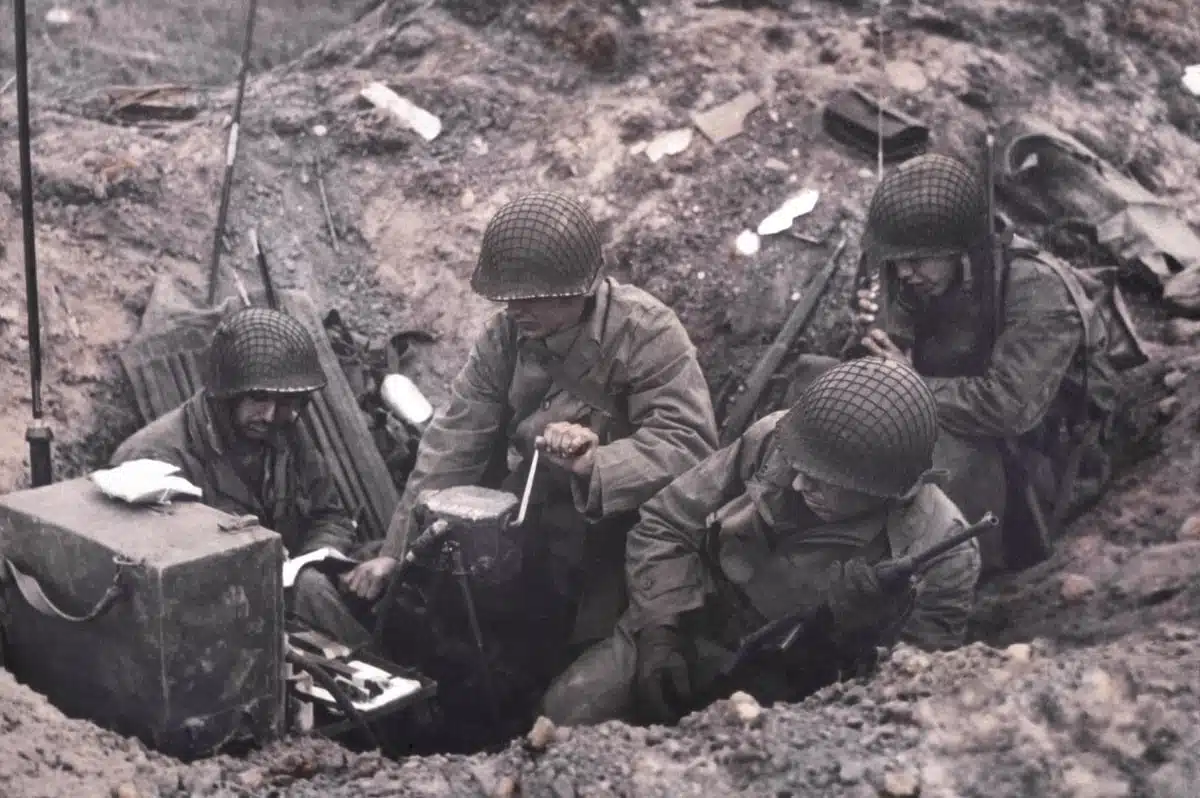Embarking on a historical battlefield tour is like stepping into the pages of history. These hallowed grounds, where pivotal moments unfolded, offer profound insights into our past. From the ancient fields of Europe to the significant sites of American history, each destination tells a story of bravery, strategy, and the course of human events. The Green Voyage guide takes you through ten of the world’s most significant battlefields, where history was written in the trenches and on the front lines.
Gettysburg, USA
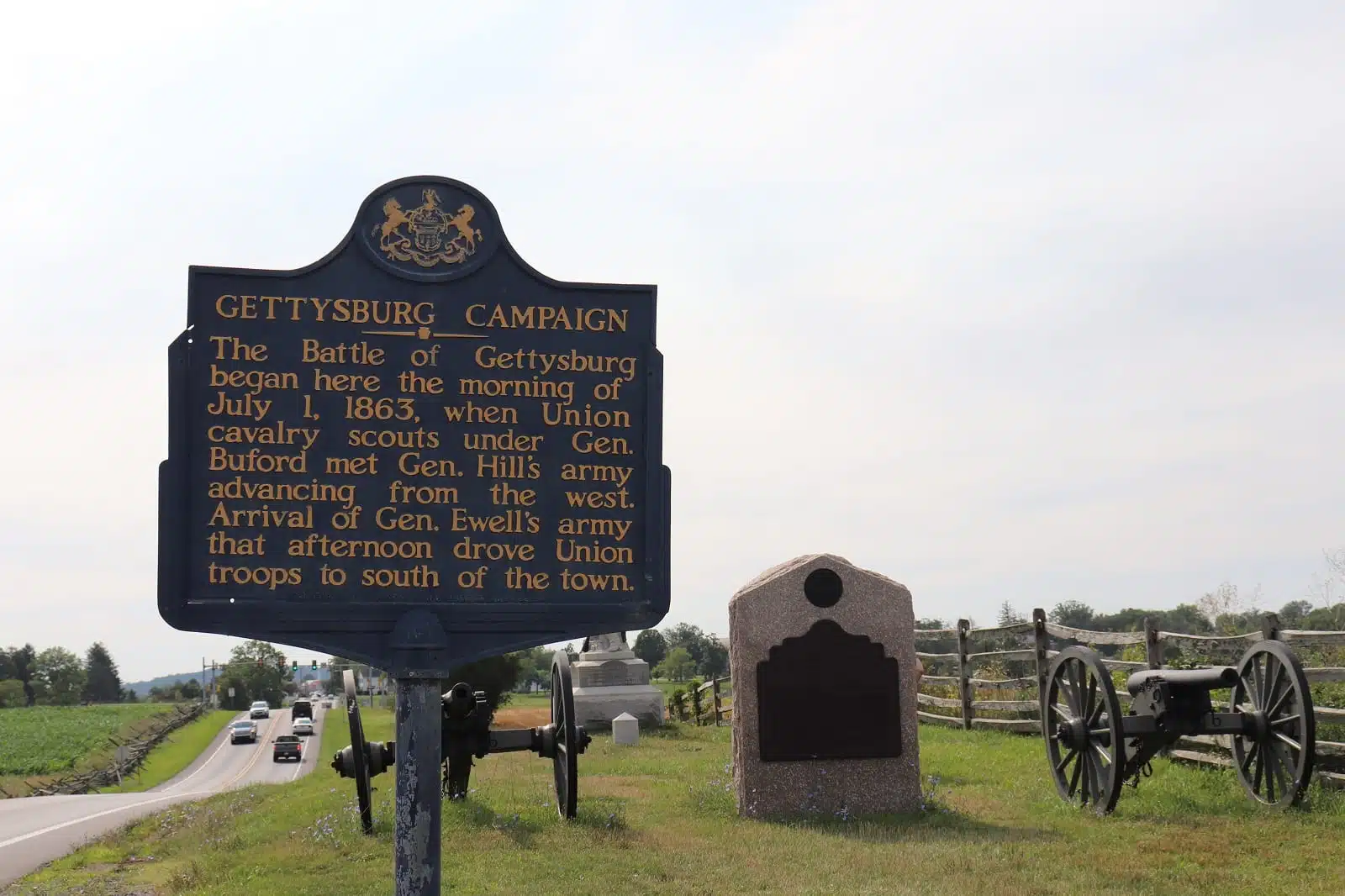
Image Credit: Shutterstock / HEakin
The Battle of Gettysburg, fought from July 1 to July 3, 1863, is one of American history’s most significant and defining moments. This battle, marking the turning point of the American Civil War, witnessed the Union Army’s decisive victory over Confederate forces. Fought in and around the town of Gettysburg, Pennsylvania, it involved the largest number of casualties in the entire war. It concluded with the famous Gettysburg Address by President Abraham Lincoln. The battle’s strategic outcome halted the northward advance of General Robert E. Lee’s army and set the stage for the Union’s ultimate victory. Today, Gettysburg is a symbol of national unity and reconciliation, its fields and monuments serving as solemn reminders of the cost of war and the value of peace.
Interesting Fact
The Battle of Gettysburg was a turning point in the American Civil War.
Insider’s Tip
Visit the Gettysburg National Military Park Museum for an in-depth understanding.
Best Time to Travel
Early summer or fall for pleasant weather.
How To Get There
Fly into Harrisburg International Airport and drive to Gettysburg.
Notable Dates
The battle occurred from July 1-3, 1863; annual reenactments are held.
Normandy, France
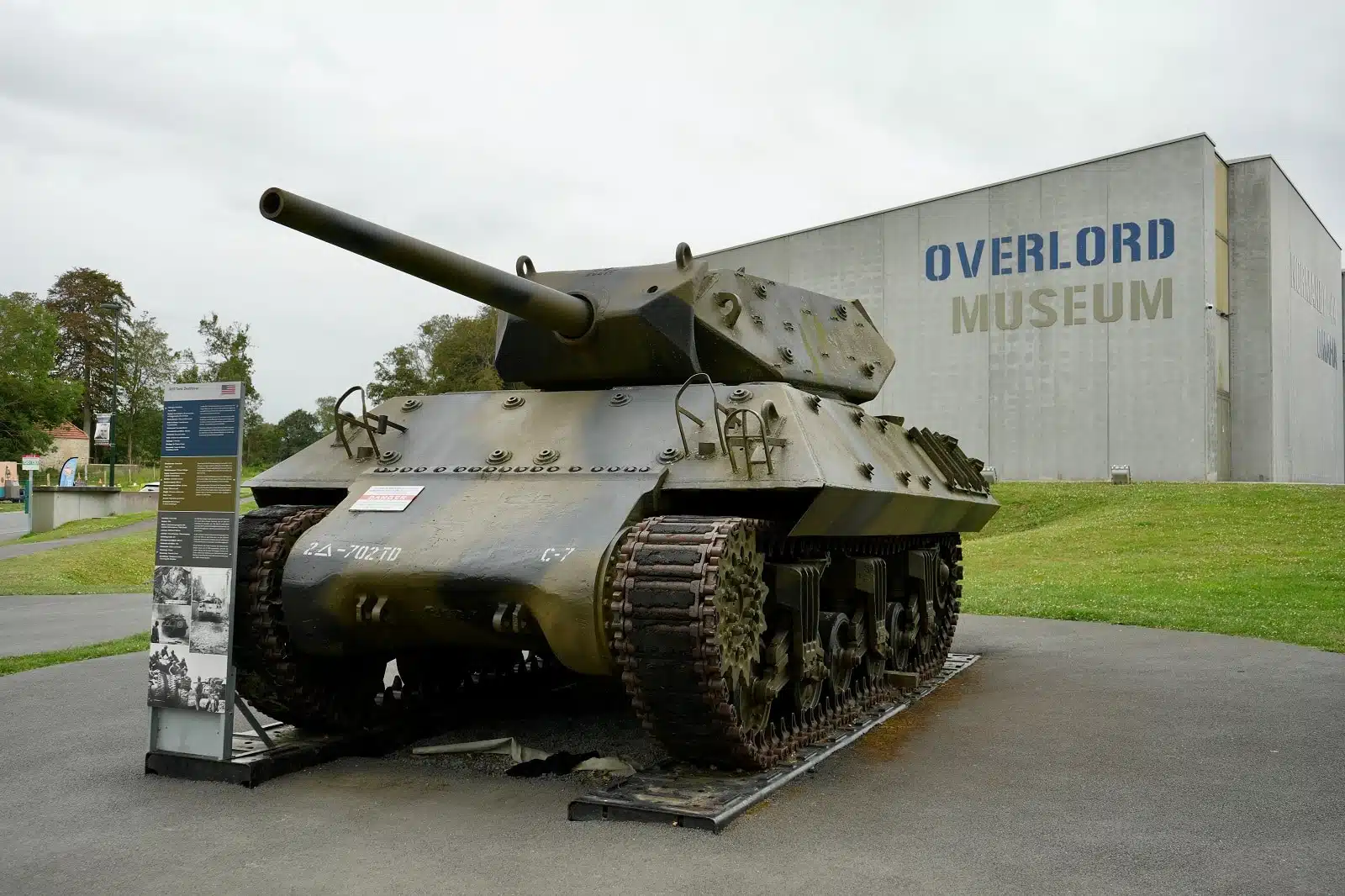
Image Credit: Shutterstock / Andy Sutherland
The D-Day landings on June 6, 1944, in Normandy, represent one of the most monumental military operations in history and a pivotal moment in World War II. Known as Operation Overlord, this massive amphibious assault marked the beginning of the liberation of Western Europe from Nazi occupation. Over 156,000 Allied troops, comprising American, British, Canadian, and other nationalities, stormed the beaches of Normandy in a coordinated effort involving sea, air, and land attacks. Despite heavy resistance and significant casualties, the bravery and determination of these forces led to the successful establishment of a vital foothold in France. This event, which involved meticulous planning and unprecedented cooperation among Allied nations, not only changed the course of the war but also demonstrated the power of unity and collective resolve in the face of tyranny.
Interesting Fact
D-Day landings in Normandy marked the beginning of the end of WWII in Europe.
Insider’s Tip
Visit the Caen Memorial Museum before exploring the beaches.
Best Time to Travel
Late spring or early fall.
How To Get There
Fly to Paris and then a train or drive to Normandy.
Notable Dates
The D-Day anniversary is on June 6, with ceremonies and events.
Waterloo, Belgium
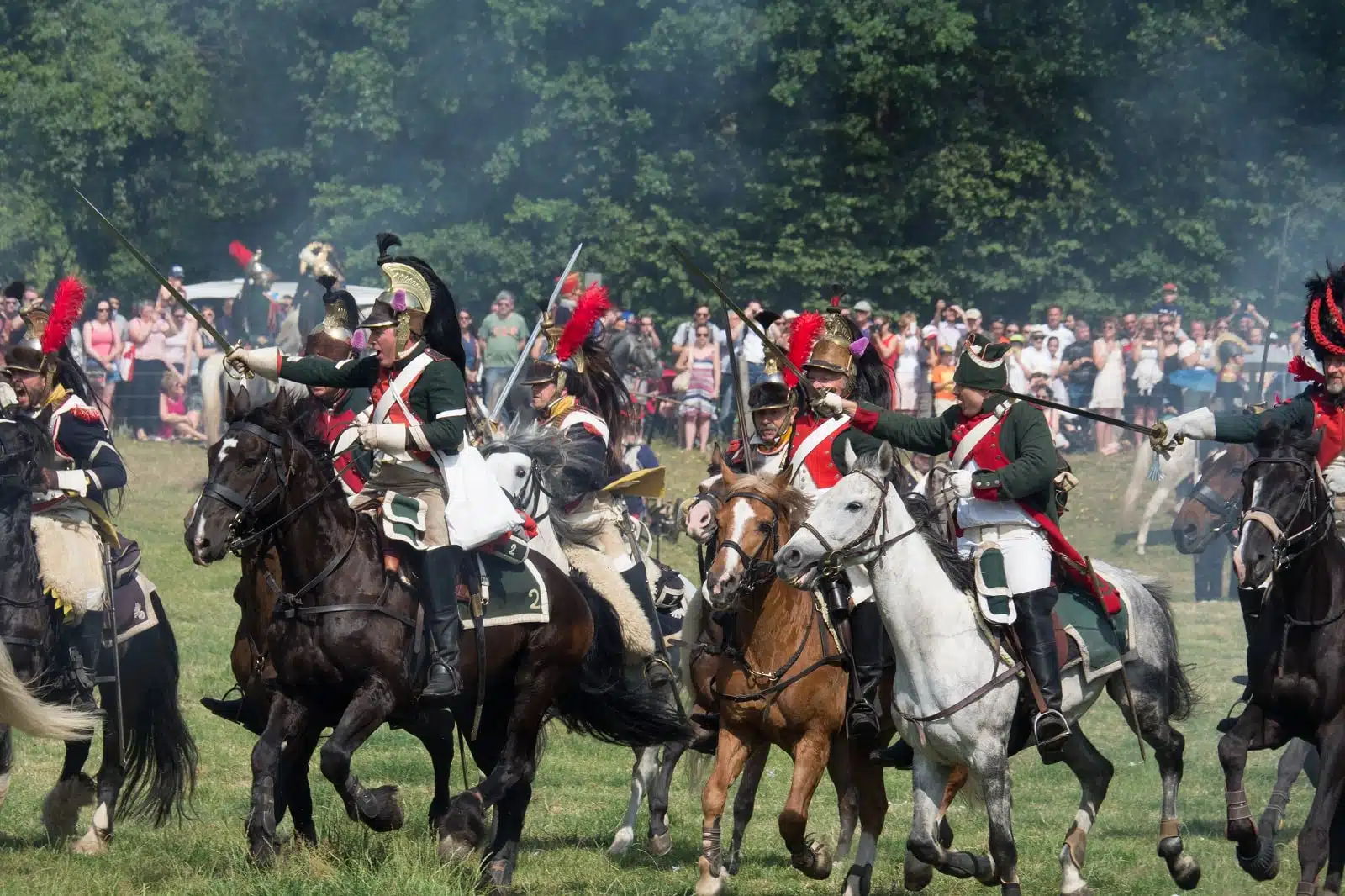
Image Credit: Shutterstock / Alexandre Tziripouloff
The Battle of Waterloo, fought on June 18, 1815, near Brussels in present-day Belgium, is one of Europe’s most famous battles. This decisive conflict marked the end of Napoleon Bonaparte’s rule as the French Emperor and the termination of his Hundred Days return from exile. The battle pitted Napoleon’s French army against the Seventh Coalition forces, led by the Duke of Wellington and Prussian Field Marshal Gebhard Leberecht von Blücher. The intense and bloody battle concluded with a catastrophic defeat for the French, effectively ending Napoleon’s military career and leading to his second exile to Saint Helena. Waterloo is often cited for its tactical and strategic lessons and remains a key reference point in military history. Its outcome reshaped the political landscape of Europe, leading to a period of relative peace and the redrawing of the continent’s boundaries at the Congress of Vienna.
Interesting Fact
The Battle of Waterloo in 1815 saw the defeat of Napoleon Bonaparte.
Insider’s Tip
Climb the Lion’s Mound for panoramic battlefield views.
Best Time to Travel
May to September for mild weather.
How To Get There
Fly into Brussels, take a short train ride, or drive to Waterloo.
Notable Dates
The battle was fought on June 18, 1815.
Gallipoli, Turkey
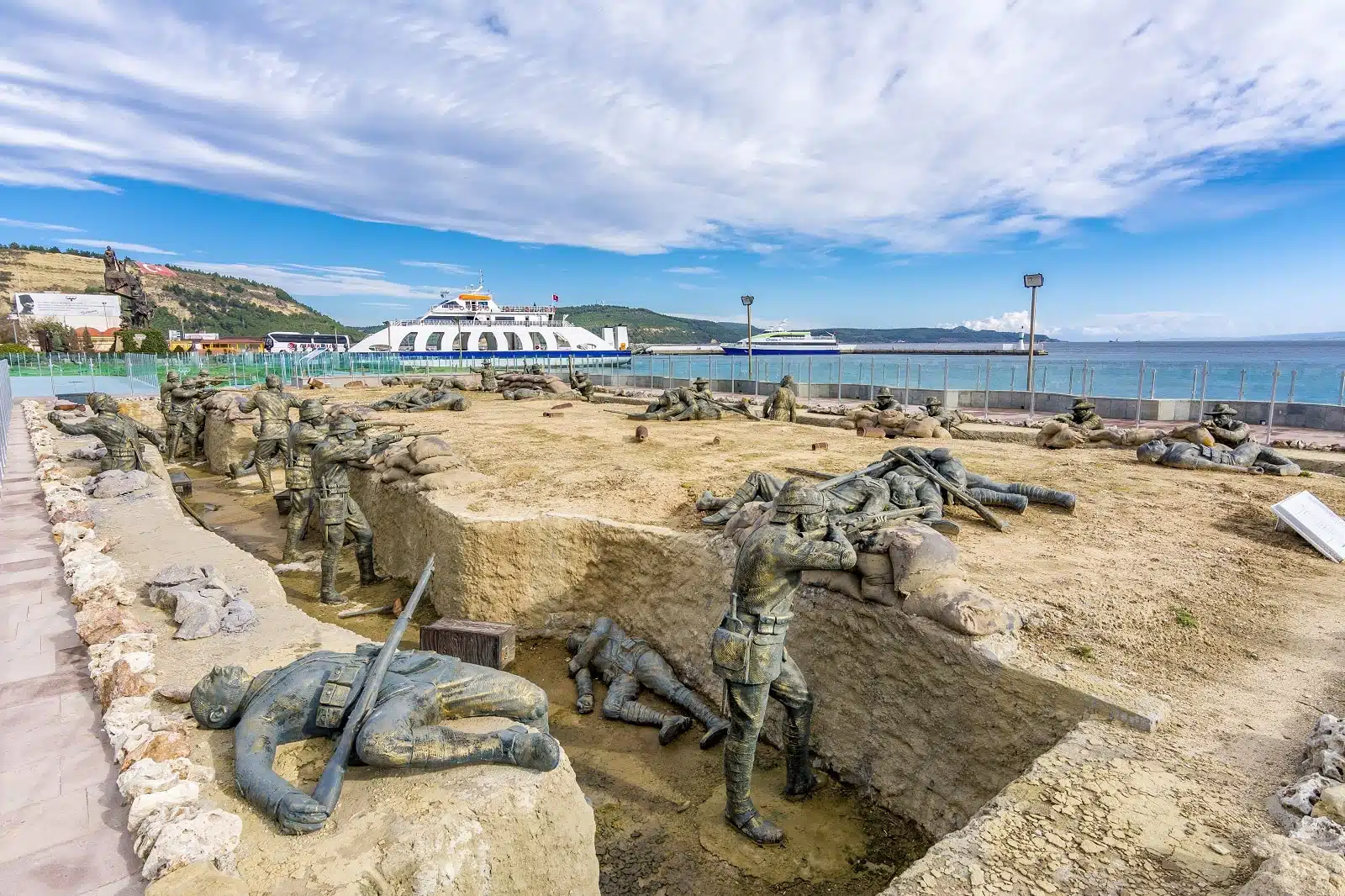
Image Credit: Shutterstock / Nejdet Duzen
The Gallipoli Campaign, fought between April 25, 1915, and January 9, 1916, in the Gallipoli peninsula in Turkey, was a significant episode of World War I. This ambitious operation, led by the Allies – primarily British, French, Australian, and New Zealand forces – aimed to secure the Dardanelles Strait and capture Constantinople (now Istanbul), the capital of the Ottoman Empire, an ally of the Central Powers. The campaign is particularly notable for its grueling and costly nature, with both sides enduring heavy casualties and harsh conditions. It became a defining moment in the national consciousness of Australia and New Zealand, marking the birth of their national identities and commemorating it annually on ANZAC Day. Despite the bravery and endurance of the troops, the campaign ended in a victory for the Ottoman Empire and a strategic failure for the Allies, with lasting military and political ramifications. The Gallipoli campaign is remembered for its tactical miscalculations, the endurance of soldiers in the face of adversity, and its impact on the course of the First World War.
Interesting Fact
Gallipoli was a major WWI campaign significant for Australian and New Zealand forces.
Insider’s Tip
Attend the Anzac Day dawn service for a moving experience.
Best Time to Travel
Spring or fall.
How To Get There
Fly to Istanbul, then a domestic flight or drive to Gallipoli.
Notable Dates
Anzac Day on April 25th.
Stalingrad (now Volgograd), Russia

Image Credit: Shutterstock / DenisVolkov
The Battle of Stalingrad, lasting from August 23, 1942, to February 2, 1943, stands as one of World War II’s most significant and brutal confrontations. Fought in the city of Stalingrad (now Volgograd), Soviet Union, this battle marked a turning point in the war against Nazi Germany. The ferocity of the fighting was unparalleled, with both sides engaged in close-quarters combat and enduring extreme conditions, including the harsh Russian winter. The Soviet Red Army, under General Zhukov, eventually encircled and defeated the German 6th Army, led by General Paulus, in a decisive victory. This battle not only shattered the myth of invincibility surrounding the German Wehrmacht but also led to a significant shift in the momentum of the war, with the Soviets taking the offensive. The battle’s scale, intensity, high human cost, and strategic significance have made it one of the most studied military engagements in history.
Interesting Fact: The Battle of Stalingrad was among the deadliest in history and a turning point in WWII.
Insider’s Tip
Visit the Mamayev Kurgan Memorial Complex.
Best Time to Travel
Late spring or early fall.
How To Get There
Fly to Moscow and then a domestic flight to Volgograd.
Notable Dates
The battle lasted from August 23, 1942, to February 2, 1943.
The Somme, France
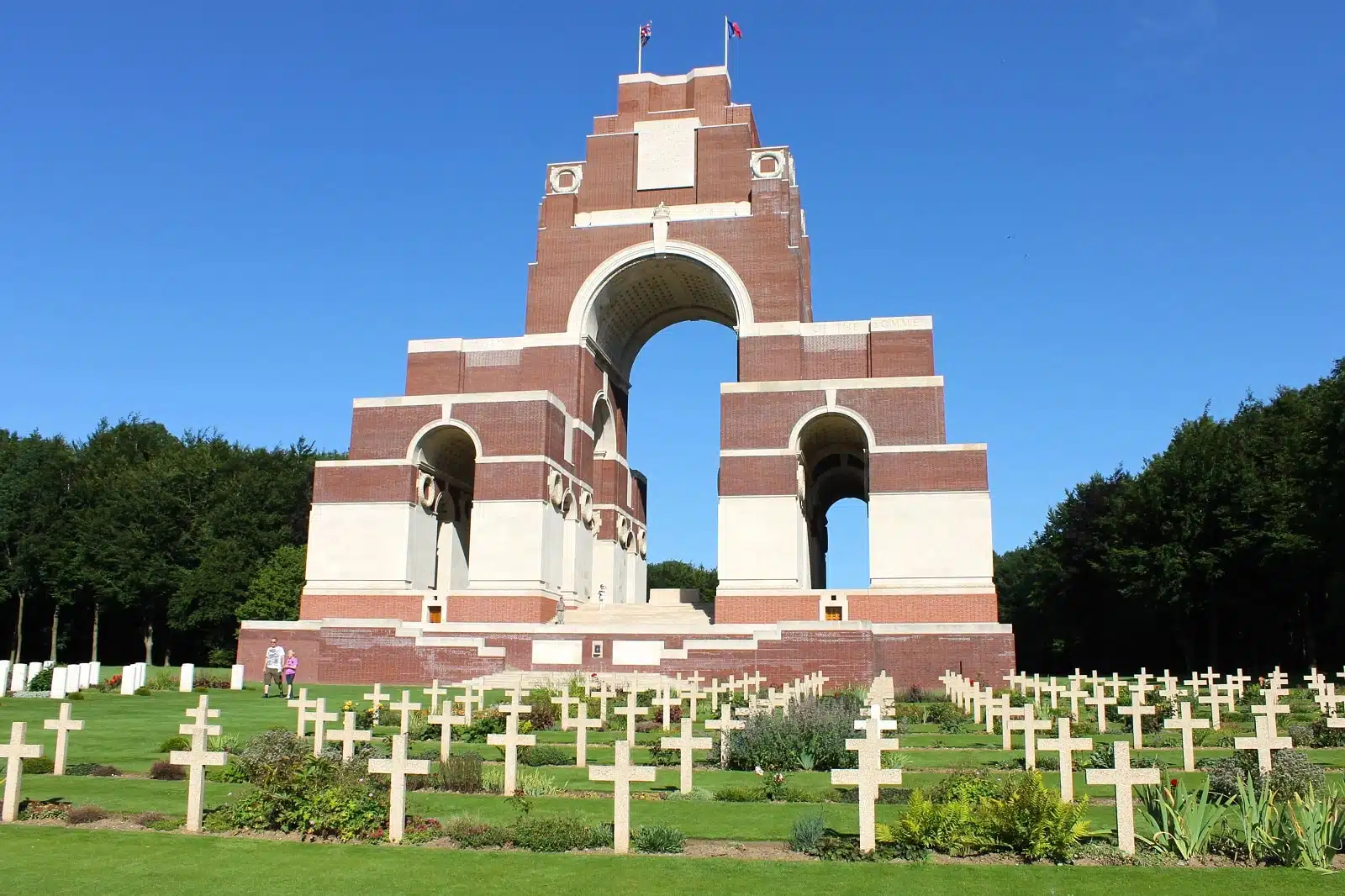
Image Credit: Shutterstock / Joaquin Ossorio Castillo
The Battle of the Somme, fought from July 1 to November 18, 1916, remains one of the most harrowing and bloodiest battles in military history, emblematic of the brutal trench warfare that defined World War I. Initiated by the Allies to break through German lines and relieve pressure on the French at Verdun, it took place along the Somme River in France. The first day of battle saw the British Army suffer the most casualties in its history, reflecting the immense human cost of the conflict. Despite months of fighting and significant losses on both sides, the battle resulted in minimal territorial gain, exemplifying the futility and devastation of trench warfare. The Somme also saw the first use of tanks in warfare, signaling a shift in military tactics and technology. This battle, with its staggering loss of life and limited strategic success, has come to symbolize the immense human cost of war and the tragedy of a lost generation.
Interesting Fact
The Battle of the Somme in WWI is known for its high casualty rates.
Insider’s Tip
Visit the Thiepval Memorial to the Missing.
Best Time to Travel
Summer and early autumn.
How To Get There
Fly to Paris and then drive or take a train to the Somme region.
Notable Dates
The battle began on July 1, 1916.
Hastings, England
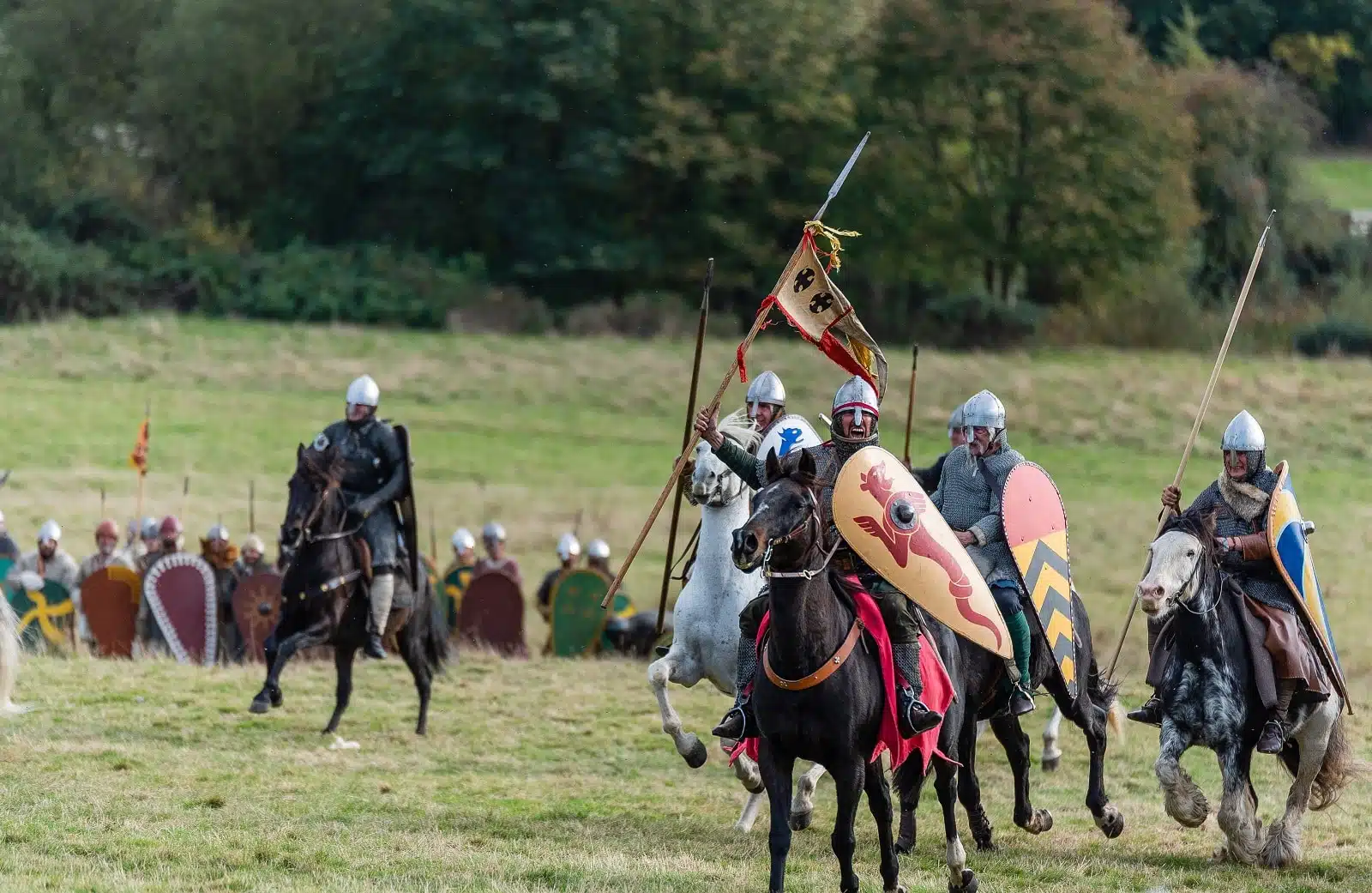
Image Credit: Shutterstock / Baby-Spider
The Battle of Hastings, fought on October 14, 1066, is one of the most defining events in English history. It saw the Norman forces under William, the Duke of Normandy, defeat King Harold II of England, leading to the Norman conquest of England. The battle was fought near the town of Hastings, in East Sussex, and was a pivotal moment that changed the course of English history. It brought significant cultural and political changes, including introducing Norman culture and the French language to England’s ruling class. The battle is famously depicted in the Bayeux Tapestry, which provides a visual record of the events leading up to and including the battle. The victory of William the Conqueror at Hastings led to his coronation as King of England. It marked the beginning of a new era in English history, profoundly influencing the country’s language, governance, and societal structures.
Interesting Fact
The Battle of Hastings in 1066 reshaped English history.
Insider’s Tip
Visit the nearby town of Battle, where the Abbey marks the battle site.
Best Time to Travel
Spring or summer.
How To Get There
Fly to London and then take a train or drive to Hastings.
Notable Dates
The battle occurred on October 14, 1066.
Antietam, USA
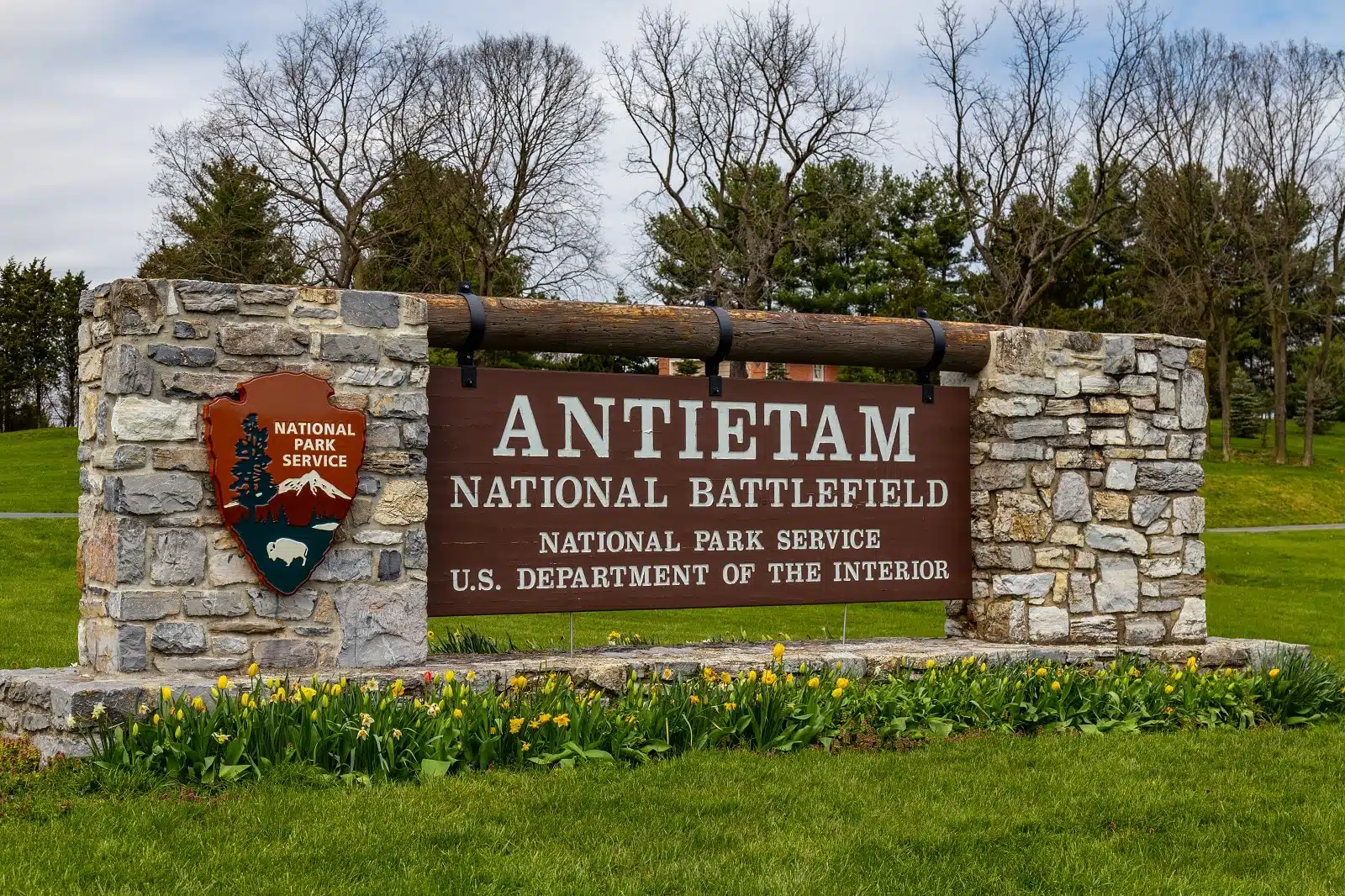
Image Credit: Shutterstock / George Sheldon
The Battle of Antietam, also known as the Battle of Sharpsburg, fought on September 17, 1862, during the American Civil War, is noted for being the bloodiest single-day battle in American history. It took place near Sharpsburg, Maryland, and Antietam Creek and saw Union forces under General George McClellan engage Confederate troops led by General Robert E. Lee. This battle was particularly significant as it halted Lee’s invasion of the North. The intense combat led to heavy casualties on both sides, concluding with no decisive victory. However, the battle’s outcome gave President Abraham Lincoln the opportunity he needed to announce his preliminary Emancipation Proclamation, which changed the character of the war. The Battle of Antietam is remembered for its staggering human cost and as a pivotal moment in the Civil War, marking a turning point in the Union’s favor.
Interesting Fact
The Battle of Antietam was the bloodiest single-day battle in American history.
Insider’s Tip
Take a guided tour for detailed insights into the battle.
Best Time to Travel
Spring or fall.
How To Get There
Fly into Washington D.C. and then drive to Antietam.
Notable Dates
The battle took place on September 17, 1862.
Little Bighorn, USA
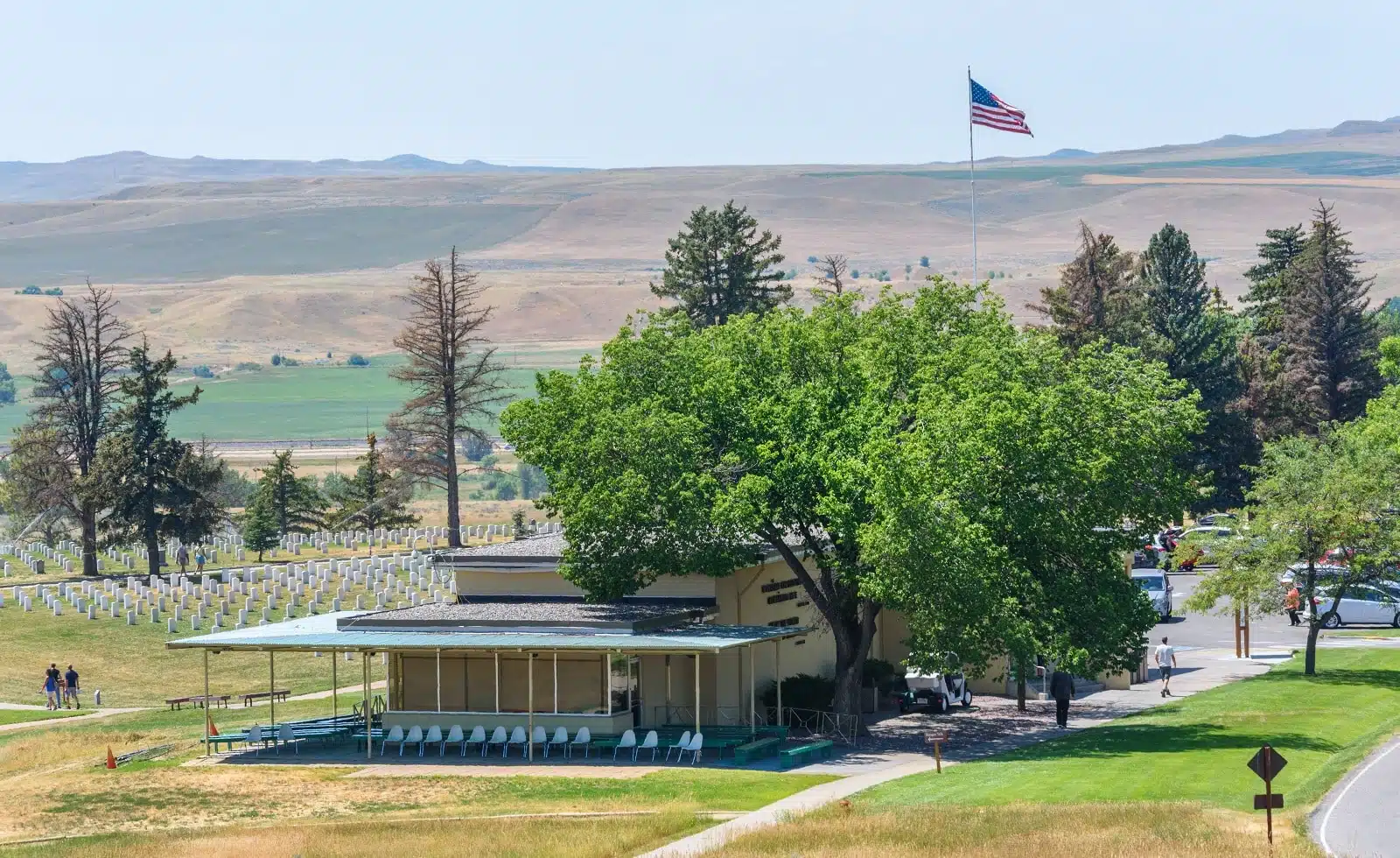
Image Credit: Shutterstock / Mendenhall Olga
The Battle of Little Bighorn, famously known as Custer’s Last Stand, was a significant engagement between the combined forces of the Lakota, Northern Cheyenne, and Arapaho tribes against the 7th Cavalry Regiment of the United States Army. Fought on June 25-26, 1876, near the Little Bighorn River in Montana Territory, this battle became emblematic of the conflict between Native American tribes and the U.S. government over territorial rights and cultural autonomy. Led by Lieutenant Colonel George Armstrong Custer, the U.S. cavalry forces were decisively defeated by the Native American warriors, under the leadership of Sitting Bull, Crazy Horse, and other tribal leaders. The battle was a substantial victory for the Native American forces but also marked a turning point that led to increased military efforts by the U.S. government against indigenous tribes. The Battle of Little Bighorn remains a symbol of Native American resistance and a subject of extensive analysis and historical significance.
Interesting Fact
The Battle of Little Bighorn was a significant Native American victory against the U.S. Army.
Insider’s Tip
Visit the Little Bighorn Battlefield National Monument.
Best Time to Travel
Summer.
How To Get There
Fly to Billings, Montana, and drive to the battlefield.
Notable Dates
The battle occurred on June 25-26, 1876.
Ypres, Belgium
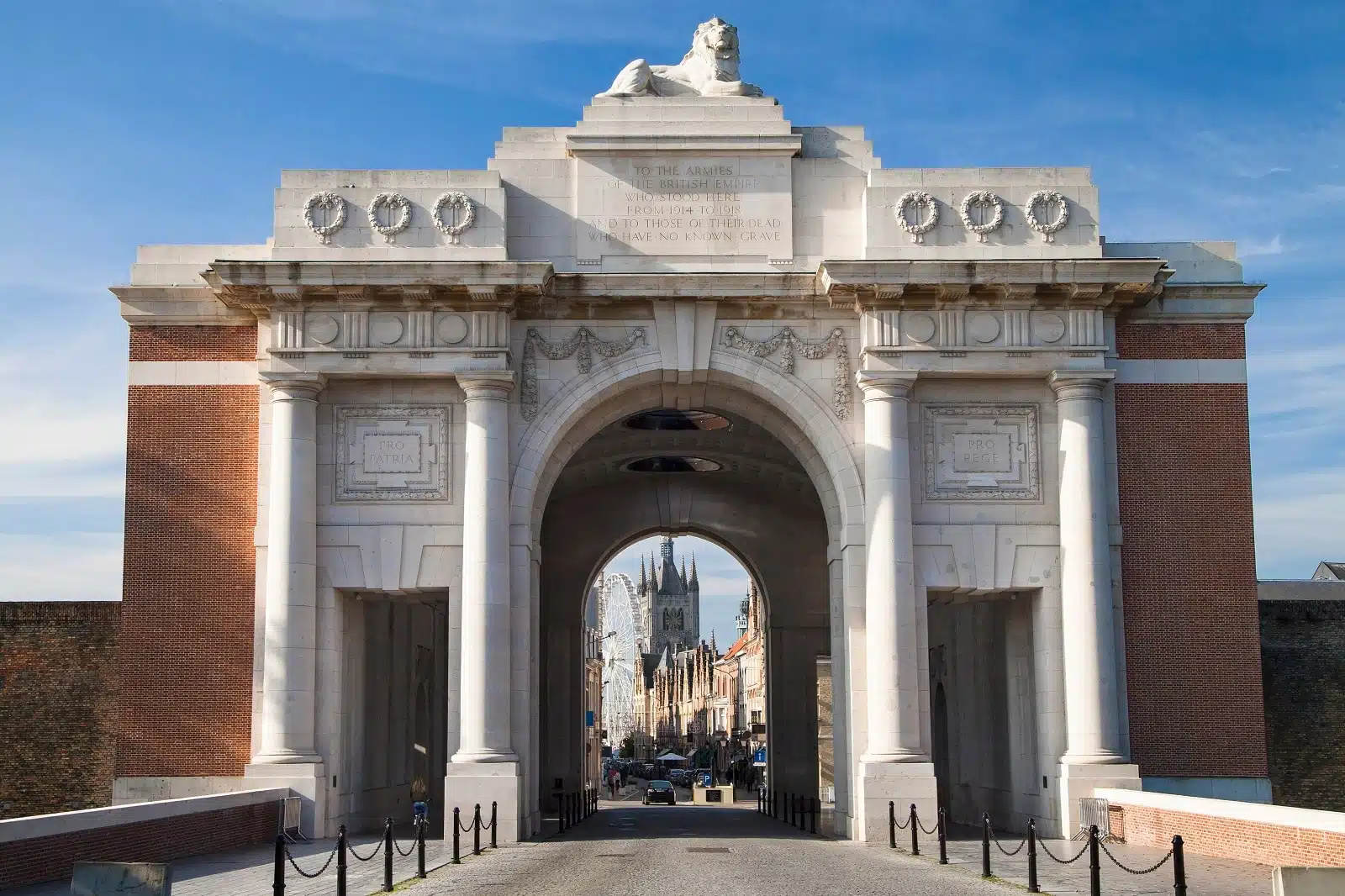
Image Credit: Shutterstock / Santi Rodriguez
Ypres, a town in Belgium, became the focal point of several major battles during World War I, known collectively as the Battles of Ypres. These battles, particularly notable for the first large-scale use of chemical warfare, were characterized by their unprecedented brutality and the extensive use of trench warfare. The town and its surrounding areas saw some of the most prolonged and bloodiest fighting of the war, resulting in significant casualties on both sides. Ypres came to symbolize the horrors of World War I, with the landscape around the town being completely devastated by the constant shelling and warfare. Today, Ypres serves as a powerful reminder of the cost of war, with numerous memorials and cemeteries that pay tribute to the fallen. Among these, the Menin Gate Memorial bears the names of over 54,000 soldiers who died in the Ypres Salient and whose graves are unknown, making it a poignant site of remembrance and reflection.
Interesting Fact
Ypres was the site of several battles during WWI, known for the use of chemical warfare.
Insider’s Tip
Attend the Last Post ceremony at the Menin Gate.
Best Time to Travel
Late spring to early fall.
How To Get There
Fly into Brussels and take a train or drive to Ypres.
Notable Dates
The battles occurred between 1914 and 1918, with several key dates.
The Bottom Line
Visiting these historical battlefields offers more than just a trip into the past; it provides a poignant reminder of the sacrifices made in shaping the world as we know it. Each site, with its unique story and setting, is a testament to the resilience and courage of the human spirit. As you walk these grounds, you not only honor those who fought but also gain a deeper understanding of the complexities of history and its enduring impact on the present and future.
Featured Image Credit: Shutterstock / Everett Collection.
Tips for Trip Success
Book Your Flight
Find an inexpensive flight by using Kayak, a favorite of ours because it regularly returns less expensive flight options from a variety of airlines.
Book Your Hotel or Special Accommodation
We are big fans of Booking.com. We like their review system and photos. If we want to see more reviews and additional booking options, we go to Expedia.
You Need Travel Insurance!
Good travel insurance means having total peace of mind. Travel insurance protects you when your medical insurance often will not and better than what you get from your credit card. It will provide comprehensive coverage should you need medical treatment or return to the United States, compensation for trip interruption, baggage loss, and other situations.Find the Perfect Insurance Plan for Your Trip
